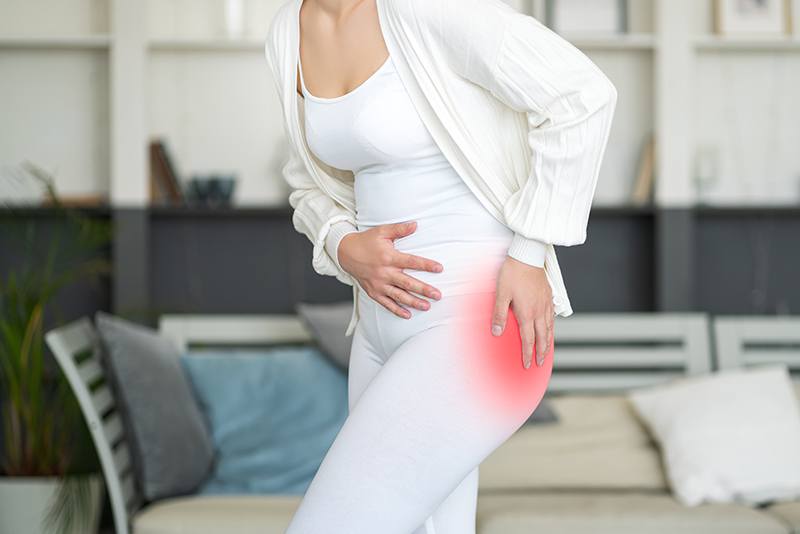
How to Prevent the Need for a Total Hip Replacement
Your hips are the strongest joints in your body, but they’re not invincible. Luckily, there’s a lot you can do today to reduce your risk of needing hip replacement surgery in the future. Here’s how to keep your hips healthy as you age.
As your strongest and second most versatile set of joints (only your shoulders have a greater degree of mobility), your hips are inherently resilient. But these high-use, load-bearing joints are also vulnerable to a variety of painful problems, including:
- Traumatic injuries (labral tear; fracture)
- Overuse injuries (hip bursitis; strains)
- Degenerative joint disease (osteoarthritis)
- Inflammatory disorders (rheumatoid arthritis)
- Structural issues (dysplasia; impingement)
Luckily, being proactive about your hip joint health today can minimize your chances of experiencing the kinds of problems that often lead to a total hip replacement in the future.
Here, our expert team of board-certified orthopedists at Orthopedic Center of Palm Beach County in Atlantis, Boynton Beach, and Wellington, Florida, explore easy ways to keep your hips strong, healthy, mobile, and pain-free as you age.
1. Control your weight
Being overweight places increased stress and pressure on your load-bearing joints, including your hips, knees, and ankles. In fact, the amount of gravitational force your weight-bearing joints experience when you’re standing, walking, running, jumping, or dancing can be up to six times your body weight.
If you’re 20 pounds overweight, your hips bear an additional 60-120 pounds of pressure with every step you take. Given that excess weight is a frequent contributing factor in hip damage and pain, reaching a healthy weight is essential for maintaining healthy hip joints.
2. Get regular exercise
Your body — and your joints — are made to move. Just as a sedentary lifestyle and lack of regular exercise weaken and destabilize your joints, leaving them more vulnerable to injury and progressive degeneration, regular exercise keeps them strong, healthy, and mobile.
Regular exercise offers a myriad of joint-protecting benefits that promote healthy hips. Staying physically active strengthens the muscles that support your hips, helps you maintain optimal range of motion, preserves bone density within your joints, and increases circulation to keep your hip joints nourished and well-lubricated.
3. Vary your activity types
Keeping your hips strong, healthy, mobile, and injury-free requires a well-rounded exercise routine that includes endurance, resistance, and flexibility training. Low-impact activities such as walking, jogging, dancing, cycling, swimming, yoga, and body weight exercises (i.e., squats, lunges, planks) are excellent hip-supporting options.
Proper form and technique are just as important as the type of activity you choose; any exercise that overstresses or overextends your hips can damage your joints, increasing your risk of injury, pain, and future joint concerns.
4. Practice good posture
Poor posture (i.e., hunched shoulders) causes physical imbalances and compensations that can readily lead to tension and stress in the muscles and connective tissues that support your hips. Over time, these imbalances can adversely affect hip joint alignment and function.
Being mindful of your static posture when you’re standing, sitting, and sleeping, as well as your dynamic posture, or how you hold your body when you’re moving, takes unnecessary stress off your hip joints (and your lower back and knees). Good posture helps safeguard your hip health, range of motion, and mobility as you age.
5. Wear supportive shoes
Unsupportive shoes make it harder for your feet and ankles to maintain normal balance and distribute your weight evenly. Unfortunately, poor balance and weight distribution commonly lead to faulty foot mechanics, placing increased stress and strain on your knee and hip joints.
Choosing comfortable, low-heeled shoes that offer ample cushioning, full arch support, and a roomy toe box isn’t just beneficial for your feet — it’s also good for your ankles, knees, hips, and lower back. Supportive shoes are especially important when you’re exercising, playing sports, or at a job that keeps you on your feet all day.
6. Address hip pain early
Besides supporting your weight and keeping you mobile, healthy hip joints provide increased protection against lower back and knee injuries that are more likely to occur when your hip joints are weak, damaged, or dysfunctional.
In this way, being proactive about your hip joint health goes beyond lowering your risk of needing a hip replacement in the future; it simultaneously reduces your risk of knee and back problems.
Anytime you experience persistent or severe hip pain, come see our team — the earlier we can diagnose a hip problem, the better. Give us a call today to schedule a visit at your nearest Orthopedic Center of Palm Beach County office, or click online to book an appointment at your convenience.





